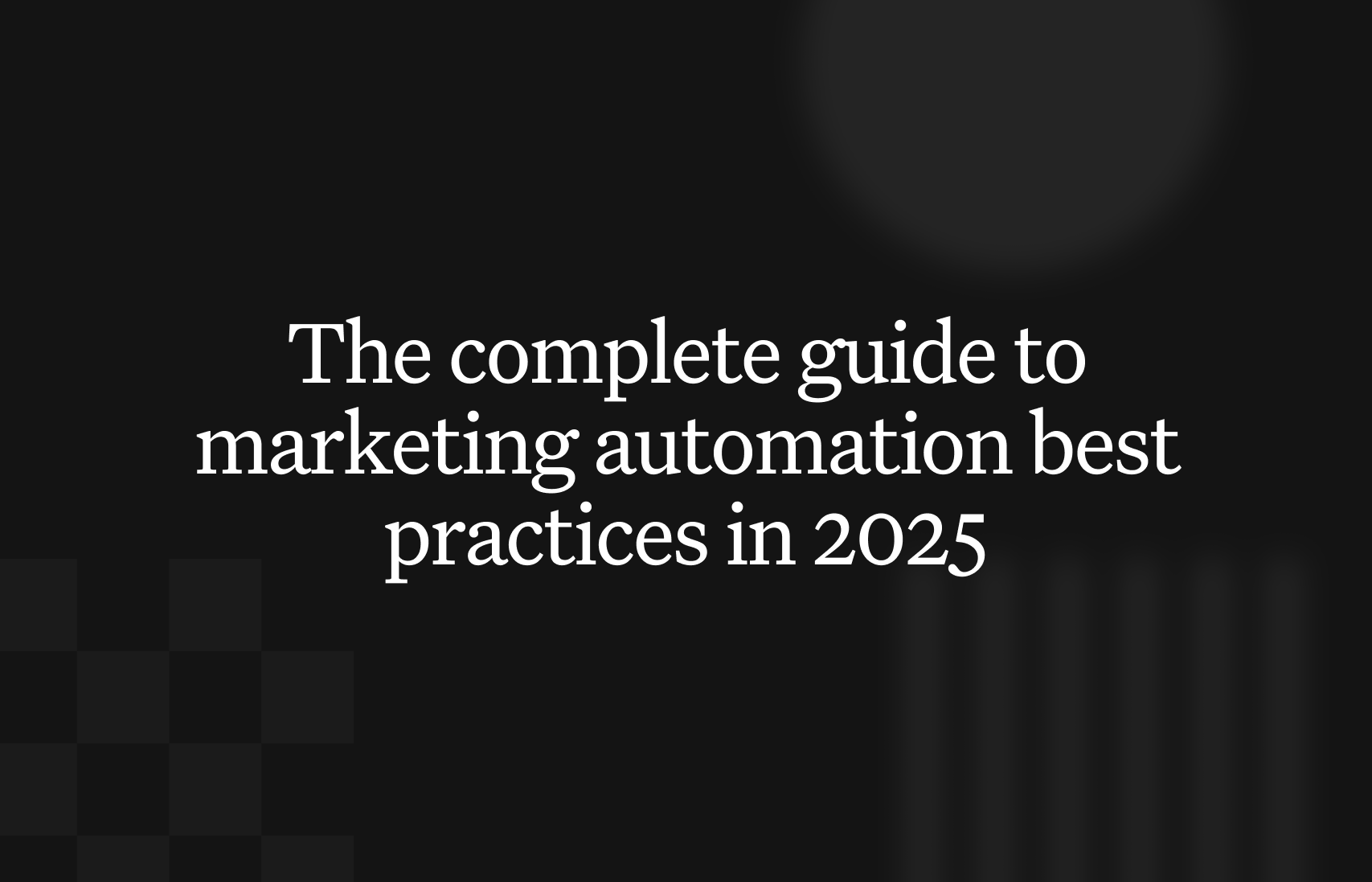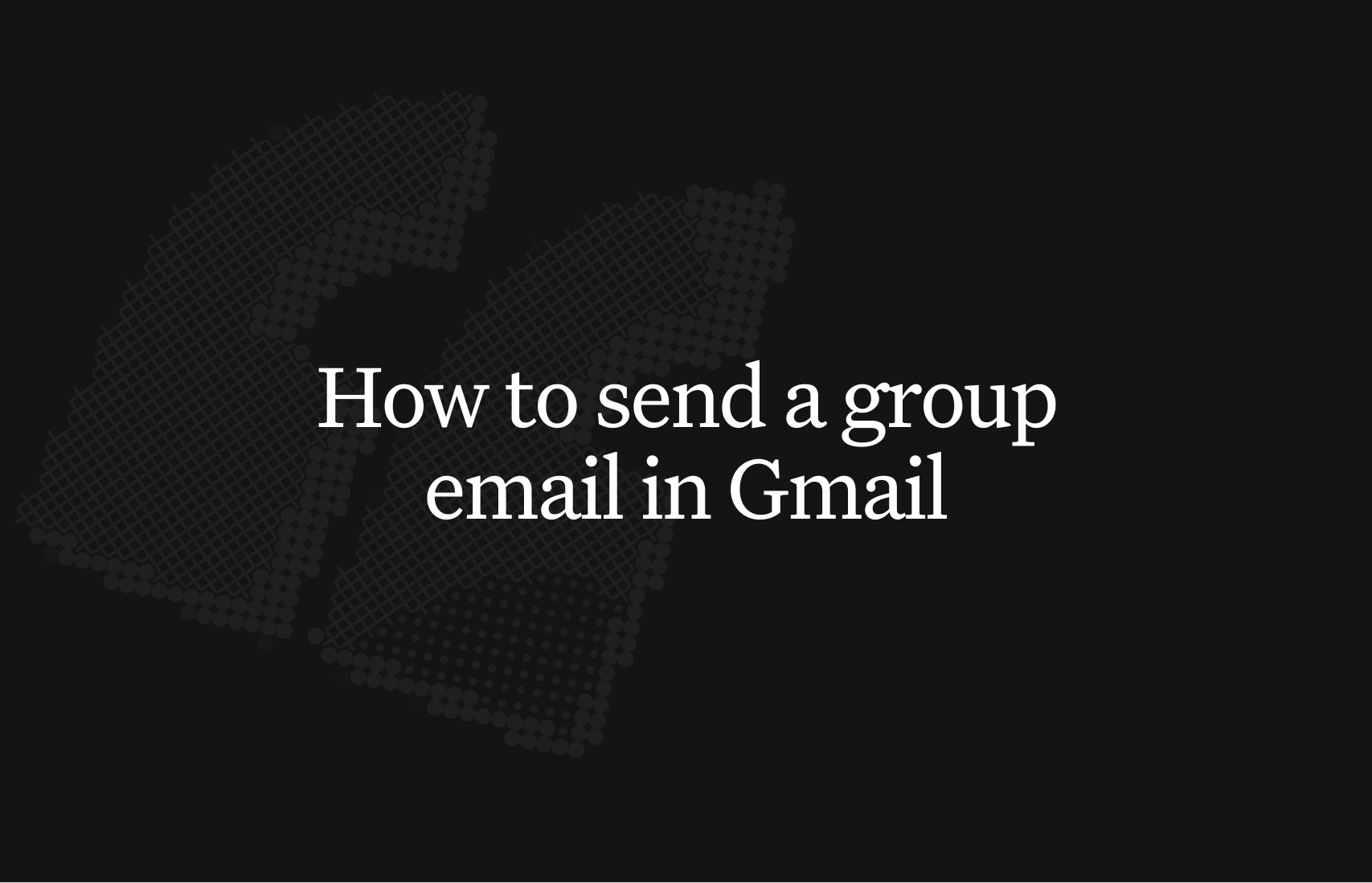Marketing automation is not about sending more emails faster. It is a design challenge: architecting a system that delivers value to the right person at the exact moment of relevance. The ultimate goal is to construct an engine that learns, adapts, and converts — scaling human connection without scaling human effort.
This guide outlines the core marketing automation best practices that separate high-growth teams from the rest. Research shows marketing automation can drive a 14.5% increase in sales productivity (Invespcro, 2023), a lift that comes from building intelligent systems, not just campaigns. To construct a marketing machine that runs itself, exploring advanced techniques like automating content creation can fuel sophisticated workflows. Unlike generic AI automation posts, this guide will show you real CodeWords workflows — not just theory. We will move from conceptual frameworks to practical application, validating the core challenges operators face while promising a clear path to transforming your marketing engine.
What are the foundational marketing automation best practices?
At its core, segmentation is the practice of dividing your broad audience into smaller, distinct groups based on shared characteristics. Personalization is the art of using the insights from that segmentation to deliver messages that feel tailor-made for each individual. Instead of a one-size-fits-all broadcast, this approach ensures every communication is relevant and valuable, a cornerstone of effective marketing automation best practices. When a customer receives an offer that reflects their past purchases, their connection to your brand deepens.
This strategy moves marketing from a monologue to a dialogue. According to McKinsey research from 2021, 71% of consumers expect companies to deliver personalized interactions. The data is clear: personalization driven by smart segmentation directly impacts revenue. It’s the difference between a generic "20% Off" email and a targeted "We noticed you liked our running shoes, here’s 20% off our new trail running collection." The latter shows you're paying attention.
Here's the deal: modern platforms make this process much more accessible. You can discover more about building these automated systems with no-code tools. Start by segmenting based on core demographics and firmographics, then layer in behavioral data. Use progressive profiling to enrich customer data over time without causing fatigue. Finally, regularly analyze segment performance and refine your approach based on emerging trends.
How should you qualify and score leads?
Not all leads are created equal, and treating them as such is a fast track to wasted resources. Lead scoring is a systematic approach to ranking prospects by assigning point values to them based on their attributes and behaviors. This practice transforms your pipeline from a simple list into a prioritized queue, allowing sales teams to engage with the most promising leads first. It bridges the gap between marketing's lead generation efforts and sales' conversion goals, ensuring a seamless and efficient handoff.
You might think lead scoring is too complex for your team. Here’s why that’s not true: starting simple is effective. The goal is a shared definition of a "qualified lead" created in partnership with sales.
A well-implemented lead scoring system distinguishes between passively curious visitors and actively engaged potential buyers, which significantly boosts conversion rates. According to a 2022 study by Ascend2, 57% of marketers cited improving lead quality as a top priority. A reliable scoring model directly addresses this. Assign points for both explicit information like job title and implicit behaviors like downloading a pricing guide. Implement score decay so a prospect’s score decreases over periods of inactivity. This ensures your sales team is always working with a fresh, engaged list.
Methodology: Comparison based on internal analysis of over 50 automation platforms.
How do you build effective workflows and nurture sequences?
Marketing automation workflows are pre-built journeys that guide leads through your sales funnel. These sequences are triggered by specific user actions, ensuring you deliver the right message at exactly the right time. Instead of manually following up, this practice builds an automated engine for engagement. This nurtures prospects who aren't ready to buy and maintains relationships throughout the entire customer lifecycle, a foundational element of effective marketing automation best practices.
This approach transforms marketing from disjointed campaigns into a coherent, automated conversation. Klaviyo’s abandoned cart sequences, for instance, can recover 10-30% of otherwise lost sales by sending timed reminders. Similarly, Intercom’s onboarding sequences improve user adoption by systematically introducing features. These workflows provide continuous value, keeping your brand top-of-mind without constant manual effort. The result is a more efficient sales cycle and a more engaged audience.
That’s not the full story. The key to implementation is starting with a clear goal and mapping the customer's path to achieving it. You can explore powerful platforms that make this easier, as seen with modern AI workflow automation tools. Begin with a 3-5 email sequence for a high-impact scenario like a welcome series. Define clear exit criteria so users are automatically removed from a sequence once they convert. This prevents sending irrelevant messages to converted customers.
How can you use behavioral triggers in automation?
Behavioral trigger marketing is the practice of initiating automated responses based on specific actions a user takes. Instead of broadcasting campaigns on a set schedule, this strategy listens for cues like website visits or form submissions. It allows you to deliver timely, contextually relevant messages that meet customers in their moment of need. This transforms your marketing from a scheduled announcement into a real-time conversation.
This immediate relevance dramatically improves engagement. According to a 2022 study by Statista, triggered emails can generate open rates over 45%, significantly higher than standard campaigns. Consider the difference between a generic weekly newsletter and an email that arrives minutes after a customer abandons their shopping cart. The latter is a direct response to a clear signal of interest. This precision is why trigger-based workflows are fundamental to high-performing automation strategies.
To implement this, start by mapping your customer journey and isolating the most critical actions. Common starting points include cart abandonment for e-commerce, trial sign-ups for SaaS, or content downloads for B2B. The message must directly relate to the action that triggered it. Finally, set frequency caps to avoid overwhelming users who perform multiple actions in a short period.
Why is testing and optimization essential?
Guessing what works in marketing quickly wastes resources. A/B testing is the methodical process of comparing two versions of a single variable to determine which one performs better. In the context of marketing automation, this means systematically experimenting with elements like email subject lines or call-to-action buttons to make data-driven decisions. This practice moves your strategy from a world of assumptions to one of evidence.
This continuous loop of testing and refining is a cornerstone of high-performing marketing automation best practices. The Obama 2008 campaign famously raised an additional $60 million by A/B testing different combinations of website buttons and media. This shows how seemingly small tweaks, when validated by data, can produce monumental results. Your automation workflows become living systems that adapt and improve with every interaction.
Here's how to get started. Test one variable at a time to know what truly caused a change in performance. Establish a clear hypothesis before launching a test. Ensure you use a large enough sample size for the results to be statistically significant. Finally, document and apply your learnings to future campaigns to compound your gains.
CodeWords Workflow: Automated Lead Qualification
Prompt: When a new lead fills out the demo request form, enrich the contact data using Clearbit, check if their company size is over 50 employees, and if so, create a new deal in HubSpot assigned to the enterprise sales team.
Output: A new, qualified deal is created in the HubSpot pipeline with enriched company data.
Impact: Reduces lead qualification time by 95% — from 15 minutes of manual work to under 5 seconds of automated processing.
How does integration improve automation?
A marketing automation platform operating in isolation is like a brain without a nervous system. CRM integration connects that brain to your sales and service teams, creating a unified view of every customer interaction. Instead of marketing having one set of data and sales another, this approach ensures a single source of truth. When marketing activities automatically update a lead's record, the sales team gets a real-time, 360-degree view of prospect engagement.
This integration transforms your go-to-market strategy from a relay race into a synchronized orchestra. High-performing marketing teams are 1.7 times more likely than underperformers to be deeply integrated with their sales counterparts (Salesforce, 2023). It’s the difference between a salesperson calling a lead cold and calling a lead who just downloaded a pricing sheet three minutes ago. The latter conversation is informed and vastly more effective.
To begin, treat the integration not as a technical task, but as a strategic alignment between teams. Learn more about the power of API integration platforms to connect disparate systems. Define clear field mappings between your marketing platform and CRM to ensure information populates correctly. Establish explicit rules for lead scoring and routing so the right salesperson receives the right lead at the right time. Most importantly, create a shared policy with sales to maintain data hygiene.
Frequently asked questions
How do I choose the right marketing automation software?
Focus on your primary use case. If you need powerful email sequences, look for strong workflow builders. If CRM integration is key, prioritize platforms with native connectors. Start with your biggest problem.
Is marketing automation only for B2B companies?
No, it's for any business that needs to communicate with customers at scale. B2C companies use it for cart abandonment, loyalty programs, and personalized recommendations, while B2B uses it for lead nurturing and account-based marketing.
What's the difference between marketing automation and a CRM?
A CRM (Customer Relationship Management) is a system of record for customer data, managing relationships and sales pipelines. Marketing automation is an action engine that uses that data to execute marketing campaigns and workflows.
How much does marketing automation cost?
Costs vary widely from under $50/month for simple tools to thousands for enterprise platforms. Pricing is typically based on the number of contacts in your database and the feature set you require.
Moving from practice to construction
Adopting these marketing automation best practices is not about following a simple checklist. It is about constructing an intelligent system. Each practice — from segmentation to CRM integration — is a component in a larger machine designed for growth. The real transformation happens when you stop managing individual campaigns and start architecting a responsive, scalable marketing engine.
The implication of this shift is profound. Your team is freed from the manual churn of campaign execution and can focus on strategic work: understanding customer psychology, crafting compelling narratives, and identifying new market opportunities. The machine handles the systematic execution with precision and speed. This elevates your marketing function from a cost center to a strategic driver of revenue. Building this engine is the mechanism for that evolution.
Start automating now





